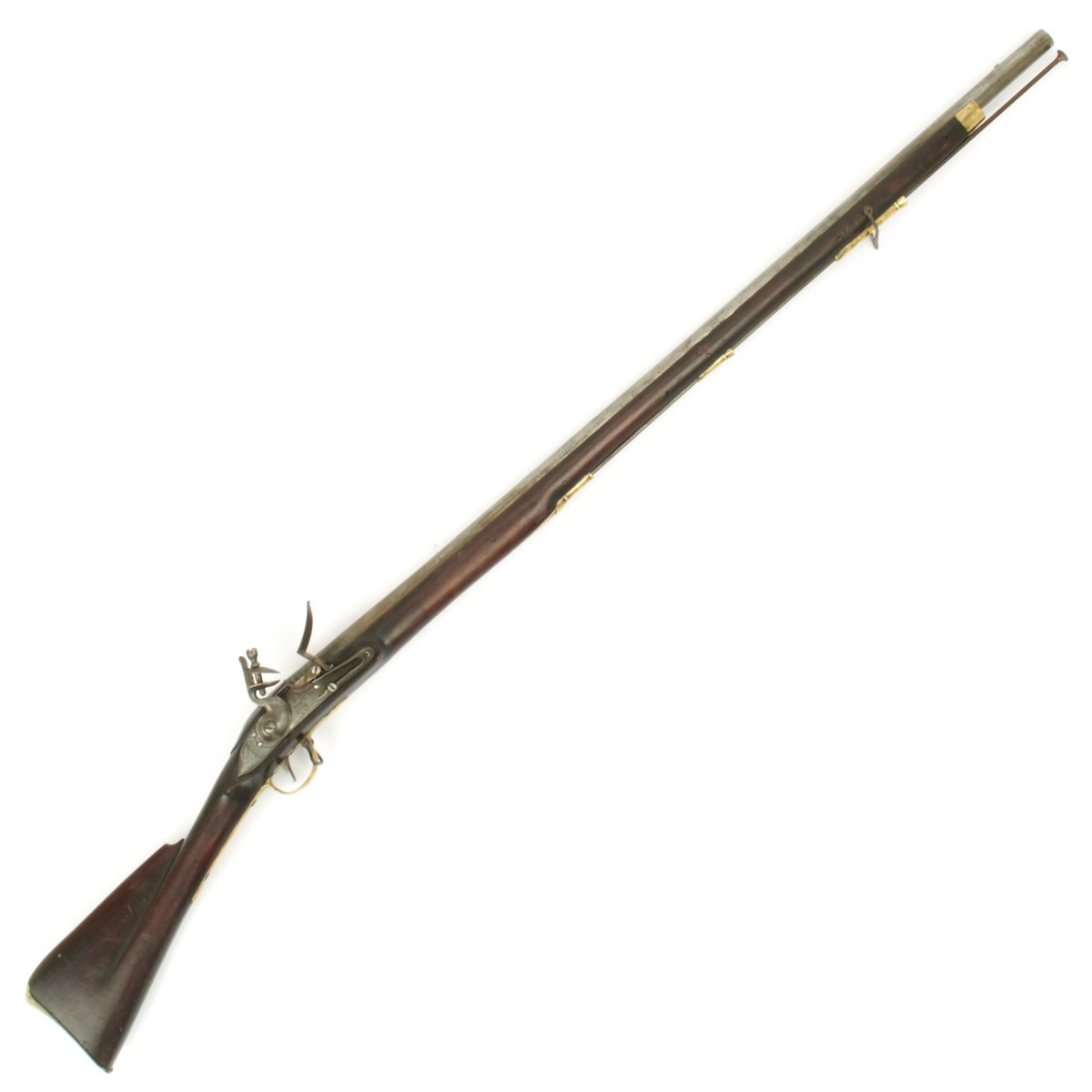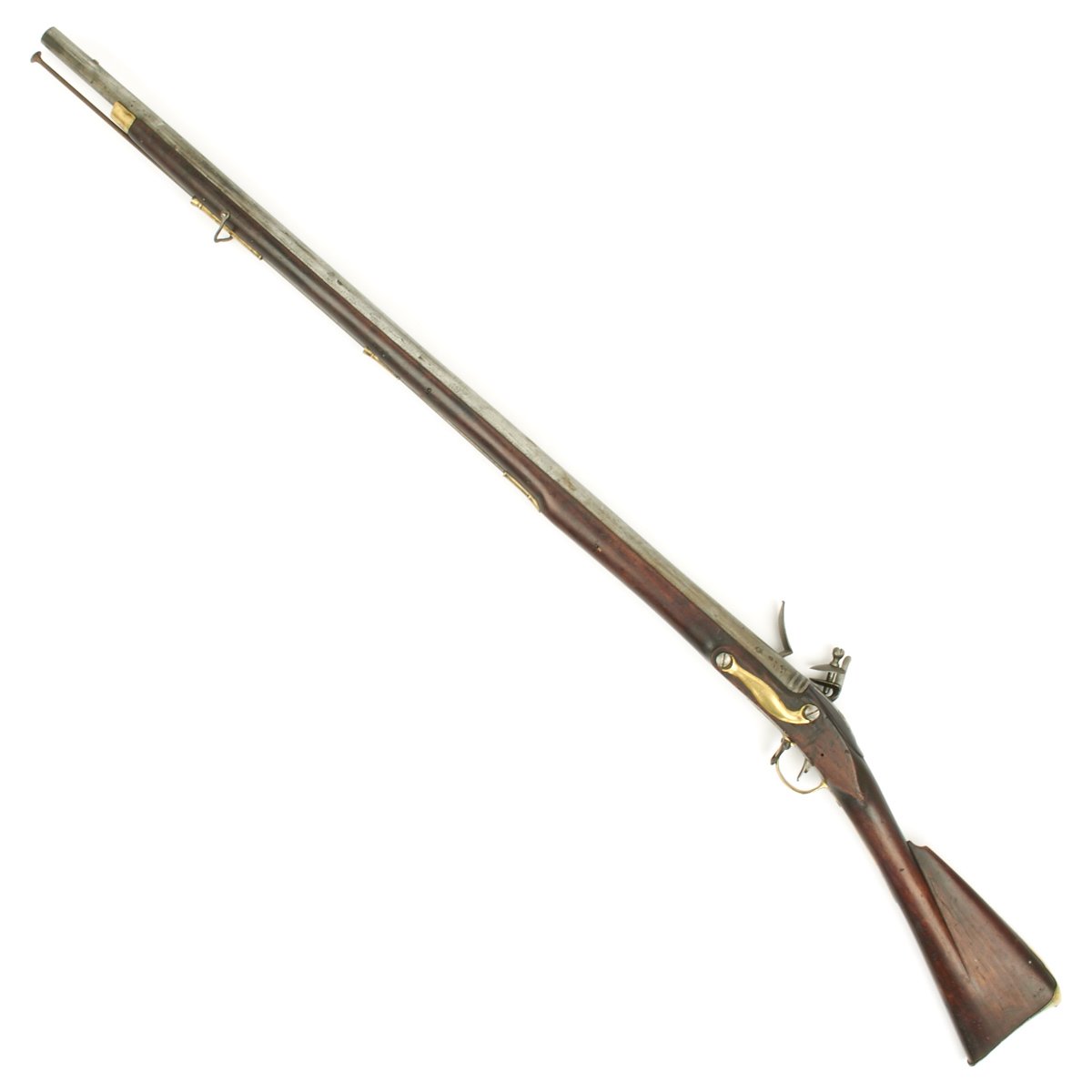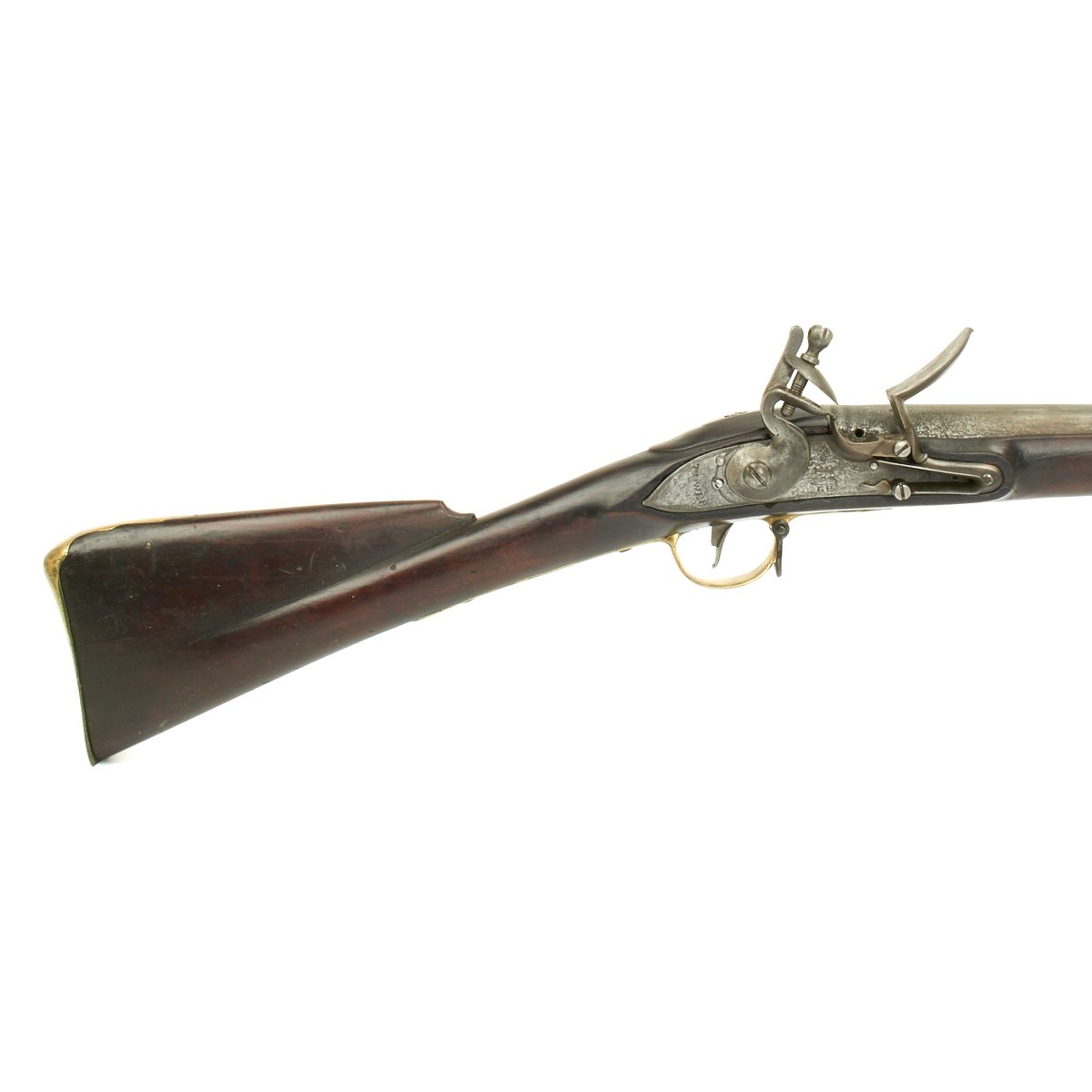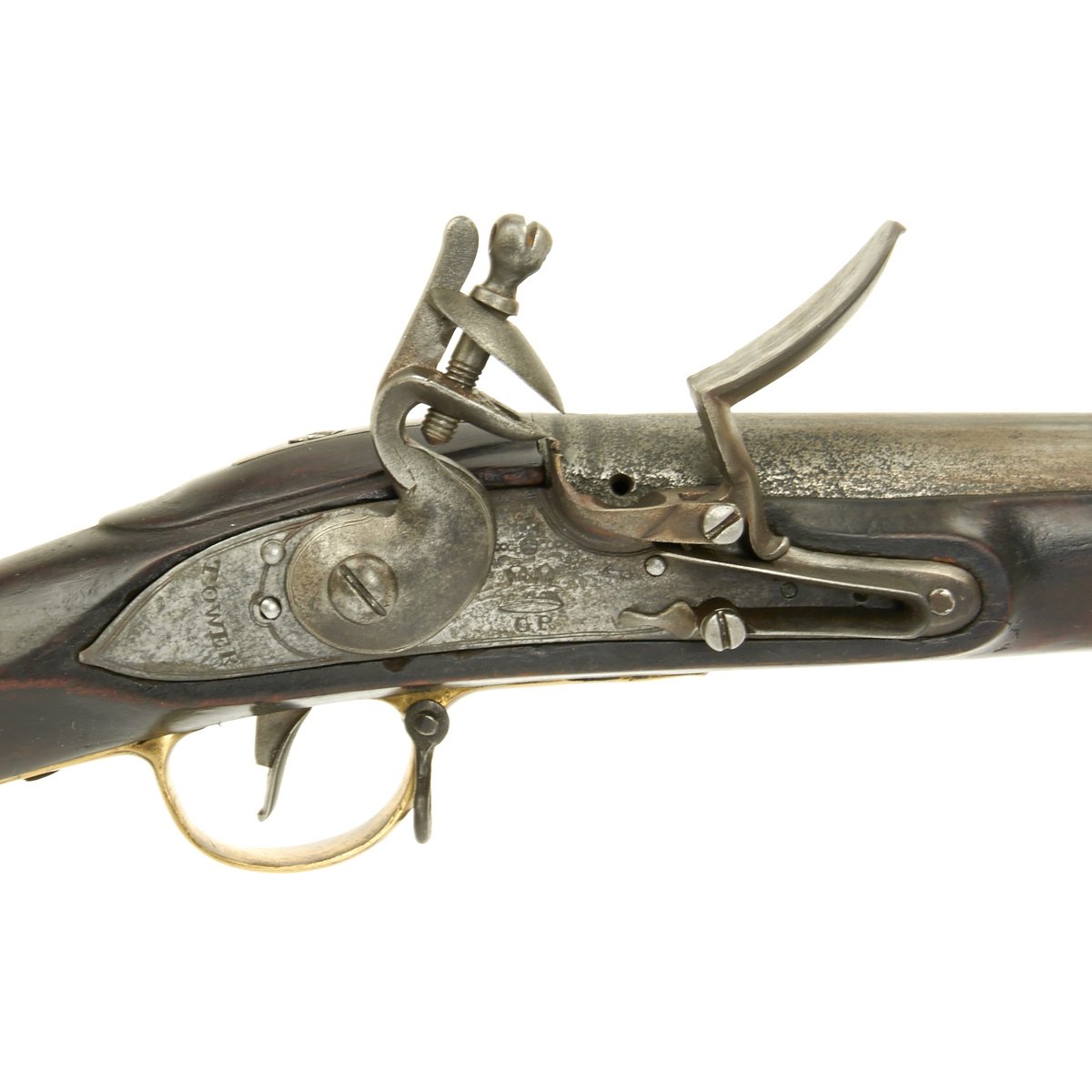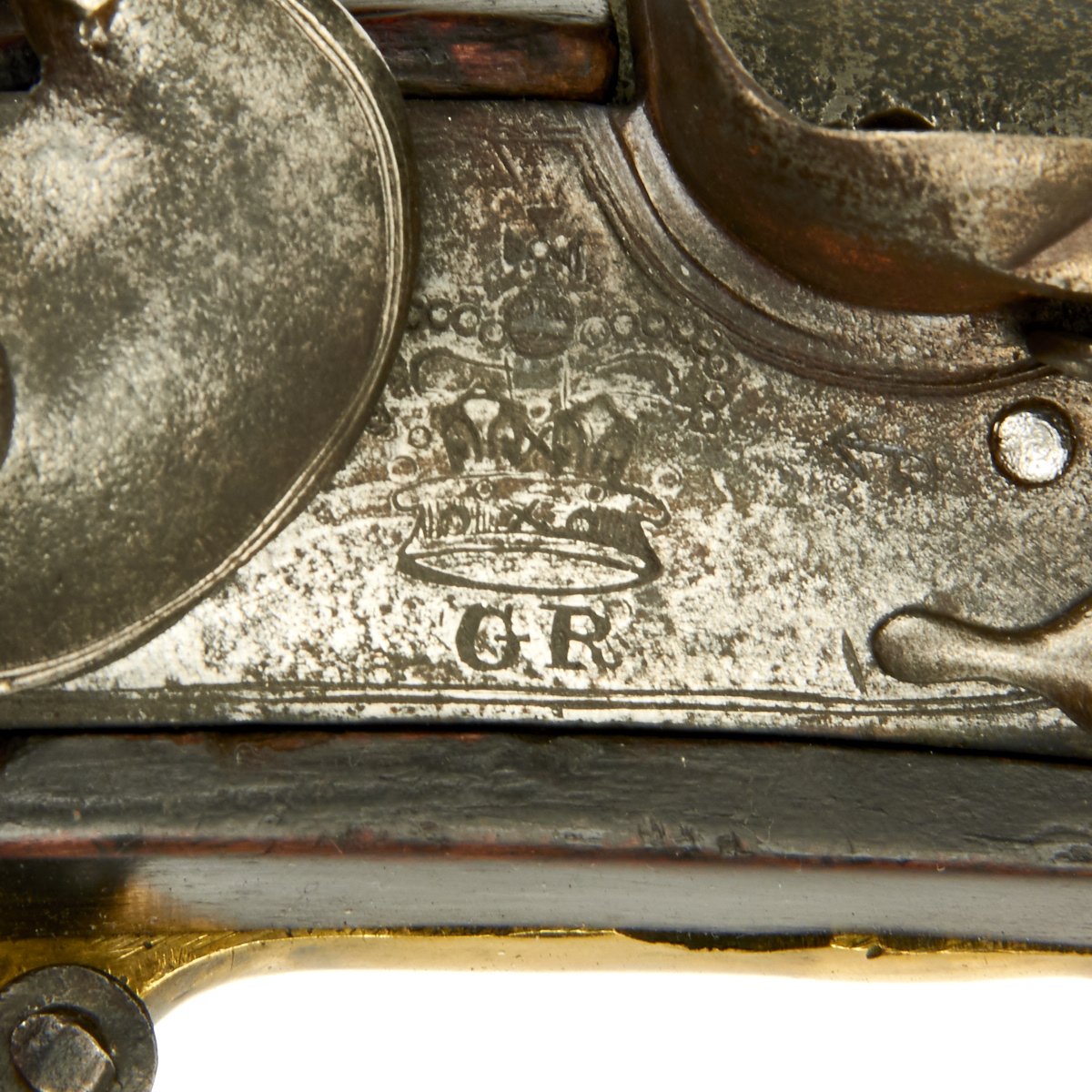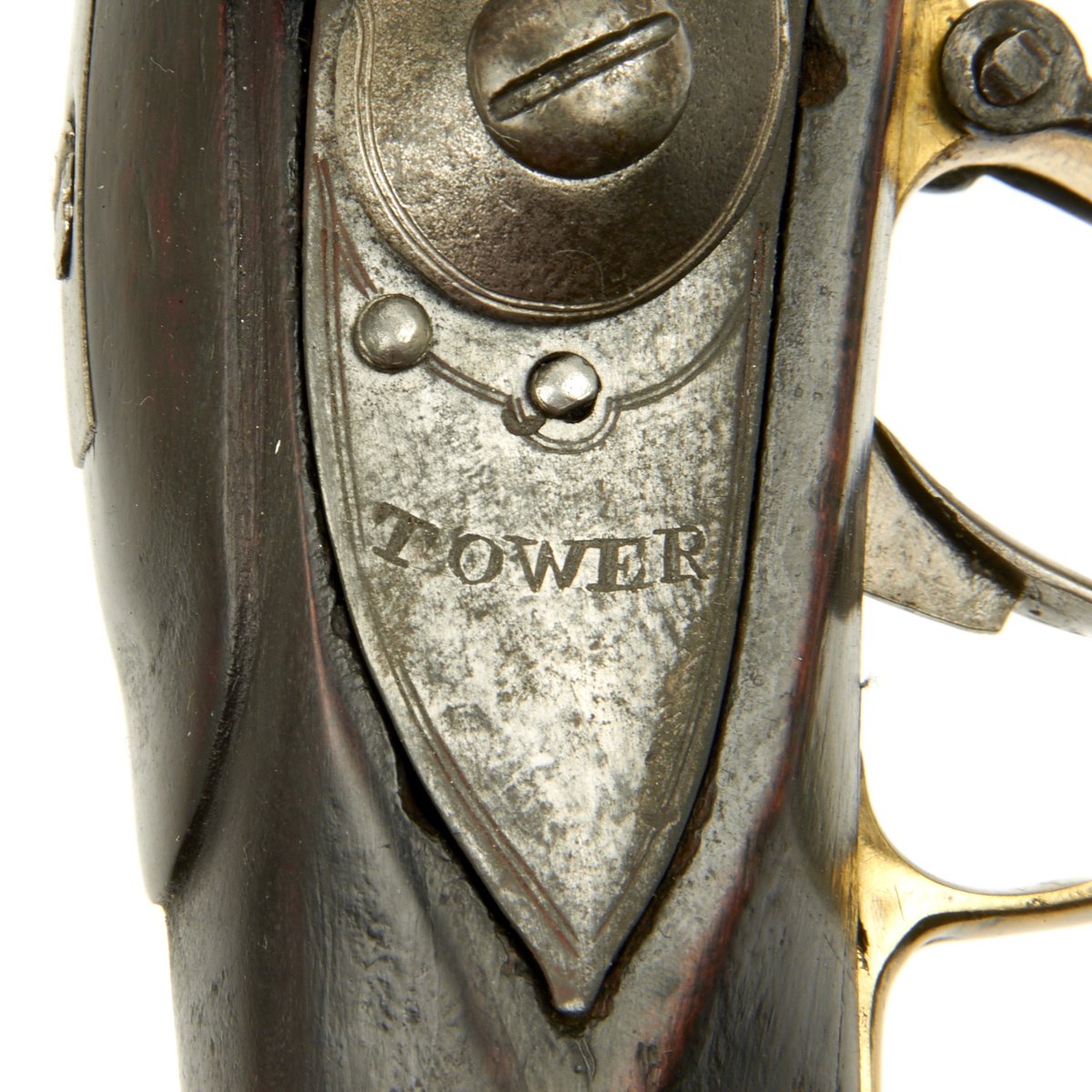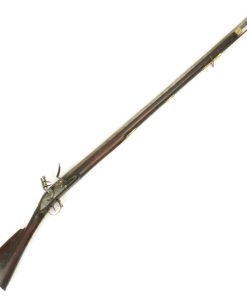Original British Napoleonic Wars P-1796 Third Model Brown Bess Flintlock Musket – 44th Regiment Original Items
$ 2.795,00 $ 698,75
Original Item: One Only. This is a great example of a regimentally marked really early Third model “India Patterm” Brown Bess, which still retains the “bannister rail” butt stock. This feature was basically done away with after 1807. The musket has a full 39″ regulation length, .75″ smoothbore iron barrel, which bears British Proof Marks, though they are slightly eroded due to powder corrosion.
The lock plate is full marked with Crown over “G.R.” mid lock, and “TOWER” across the tail. All regulation brass furniture, together with correct issue iron ramrod. Shows use but remains in amazingly tight and clean condition. Action is strong and holds at half cock. The lock and barrel have old pitting from powder burns. The barrel is marked to the:-
44TH REGT.
The 44th regiment was raised by Colonel James Long as James Long’s Regiment of Foot in 1741, and then re-designated the 44th Regiment of Foot in 1751. In 1782, most British regiments of foot were given county designations, and the regiment became the 44th (the East Essex) Regiment of Foot, and this was the name it held during the Napoleonic wars.
Napoleonic Wars Service
The regiment was sent to the West Indies in 1795 for service in the French Revolutionary Wars and took part in the recapture Martinique and Saint Lucia which, following the peace treaty of 1763, had been returned to France, and the attack on Guadeloupe. After returning to England, it took part in the expedition to Egypt in 1800 and fought at the Battle of Alexandria in March 1801 the Siege of Cairo in May 1801 and the Siege of Alexandria in September 1801. It returned home at the end of the year. The regiment was increased in strength to two battalions in 1803.
The 1st battalion embarked for North America in 1814 for service in the War of 1812 and saw action at the Battle of Bladensburg in August 1814, the Battle of North Point in September 1814 and the Battle of New Orleans in January 1815.
Meanwhile the 2nd battalion landed in Portugal in September 1810 and took part in the Battle of Sabugal in April 1811, the Battle of Fuentes de Oñoro in May 1811 and the Siege of Ciudad Rodrigo in January 1812. The battalion went on to fight at the Siege of Badajoz in March 1812. At the Battle of Salamanca in July 1812 Lieutenant William Pearce of the 2nd battalion captured the French Imperial Eagle of the French 62nd Regiment. The battalion also took part in the Siege of Burgos in September 1812 and then returned home in June 1813. The battalion embarked for Holland later in the year and saw action at the Battle of Quatre Bras and the Battle of Waterloo in June 1815.
The Classic Third Model Brown Bess named to a regiment with extensive Napoleonic service, ready to display.
Fast Shipping with Professional Packaging
Thanks to our longstanding association with UPS FedEx DHL, and other major international carriers, we are able to provide a range of shipping options. Our warehouse staff is expertly trained and will wrap your products according to our exact and precise specifications. Prior to shipping, your goods will be thoroughly examined and securely secured. We ship to thousands clients each day across multiple countries. This shows how we're dedicated to be the largest retailer on the internet. Warehouses and distribution centres can be located throughout Europe as well as the USA.
Note: Orders with more than one item will be assigned a processing date depending on the item.
Before shipping before shipping, we'll conduct a thorough inspection of the items you have ordered. Today, the majority of orders will be delivered within 48 hours. The delivery time will be between 3-7 days.
Returns
The stock is dynamic and we cannot completely manage it because multiple stakeholders are involved, including our factory and warehouse. So the actual stock may alter at any time. It's possible that you may not receive your order once the order has been made.
Our policy is valid for a period of 30 days. If you don't receive the product within 30 days, we are not able to issue a refund or an exchange.
You can only return an item if it is unused and in the same state as the day you received it. You must have the item in its original packaging.
Related products
Uncategorized
Uncategorized
Uncategorized
Uncategorized
Band of Brothers ORIGINAL GERMAN WWII Le. F.H. 18 10.5cm ARTILLERY PIECE Original Items
Uncategorized
Uncategorized
Uncategorized
Uncategorized
Armoured Fighting Vehicles of the World: AFVs of World War One (Hardcover Book) New Made Items
Uncategorized
Uncategorized
Uncategorized
Uncategorized
Uncategorized
Uncategorized
Uncategorized
Angolan Rebel 1970s era 60mm Inert Display Mortar from Angolan Civil War Original Items
Uncategorized
Australian WWII Owen MK1 Machine Carbine SMG Custom Fabricated Replica with Sling Original Items
Uncategorized
Uncategorized
Uncategorized
